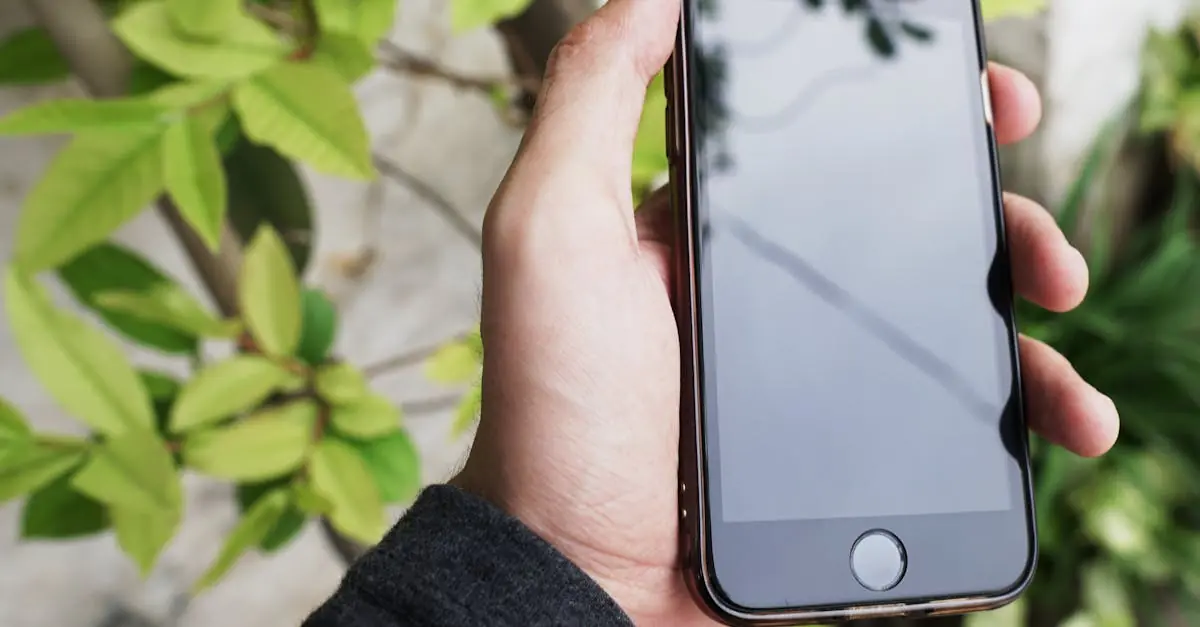Table of Contents
ToggleEver snapped a photo on your iPhone only to realize your face looks like a Picasso painting? If you’ve accidentally activated the invert feature on your camera, you’re not alone. Many users find themselves in a colorful conundrum, wondering how their selfies turned into abstract art. Fear not! Turning off the invert setting is as easy as pie—well, maybe easier if you’re not a baker.
Understanding Invert Functionality
Invert functionality alters the appearance of images taken with the iPhone camera. It flips the colors, often creating a negative effect in selfies where faces appear reversed.
What Is Invert on iPhone Camera?
Invert on the iPhone camera refers to a setting that changes color representational results. This feature, meant to assist visually impaired users, shifts bright colors to darker tones and vice versa. Users often find this setting unintentionally activated, leading to confusing photo results. Inversion can cause familiar surroundings to look unfamiliar, especially when taking selfies. Many users may not realize this function exists, resulting in distorted images that can seem unrecognizable.
Why You Might Want to Turn It Off
Turning off the invert setting maintains the natural appearance of photos. Many users aim for accuracy in their images, especially when sharing them on social media. Selfies taken with invert activated can be puzzling and may not reflect true skin tones. Distorted selfies can lower confidence, leading people to hold back from sharing pictures they typically would post. Inverting colors isn’t always practical for casual photography or important moments, making it essential to turn the setting off for clearer, more authentic images.
Step-by-Step Guide to Turn Off Invert
Disabling the invert feature on an iPhone camera is straightforward. Follow these steps to restore normal photo quality.
Accessing iPhone Settings
Start by unlocking the iPhone. Look for the “Settings” app on the home screen. Open this app to access various configurations for the device. Scroll down until encountering the “Accessibility” option. Tapping on this will lead to more settings related to visual and auditory adjustments. In this section, locate the “Display & Text Size” setting for further modifications.
Navigating to Camera Options
After accessing the “Display & Text Size” section, scroll down to find the invert option. Both “Smart Invert” and “Classic Invert” settings may appear here. Check if either of these options is enabled. Toggle off the option that is currently activated. Returning to the home screen allows for testing the camera to ensure that the invert feature no longer alters photos. Ensure proper conditions for capturing images by taking a test selfie after adjustments.
Troubleshooting Common Issues
Some users may still encounter issues even after following the steps to disable the invert feature.
Invert Option Not Disappearing
Occasionally, the invert option might not disappear after toggling it off. To address this, users can try restarting their iPhone. Powering off and turning it back on can refresh system settings. If the problem persists, checking for software updates is beneficial. Upgrading to the latest iOS version often resolves bugs related to accessibility settings. Users may also consider resetting all settings if the invert feature continues to impact photos. Navigating to Settings, then General, and selecting Reset can help restore the device’s functionality.
Camera App Behavior After Turning Off
Camera app behavior might change after the invert setting is disabled. Users should notice that photos appear in their natural colors post-adjustment. Taking a test selfie immediately after turning off the feature can confirm this change. If images remain distorted, reopening the camera app can help refresh its state. Checking for other settings, such as filters or camera modes, is also advisable. These options can inadvertently affect photo quality, so ensuring they are set to default may resolve remaining issues.
Additional Tips for Camera Settings
Exploring various camera features enhances the user experience and improves photo quality. Users can experiment with modes like Portrait, Night, and Panorama to capture stunning images. Each mode offers unique advantages for different lighting conditions and subjects. Tapping the screen allows for focus adjustments, ensuring sharp photos, while adjusting exposure can enhance brightness.
Optimizing camera performance involves several straightforward techniques. Users should regularly update their iPhone software to benefit from the latest features and improvements. Cleaning the camera lens with a microfiber cloth ensures clarity in photos. Adjust the camera settings, such as HDR and grid lines, for better composition. Utilizing third-party apps can provide additional functionalities, enabling more creative options for photography.
Turning off the invert feature on an iPhone camera can significantly improve the quality of selfies and photos. By following the simple steps outlined, users can easily restore the natural appearance of their images. It’s crucial to ensure that the settings are correctly adjusted to avoid any unwanted distortions that can affect confidence and representation in photos.
If issues persist after disabling the invert settings, troubleshooting methods like restarting the device or checking for software updates can help. With these adjustments, users can enjoy capturing authentic moments without the worry of altered colors. Embracing the full potential of the iPhone camera will lead to stunning and true-to-life images that are perfect for sharing on social media.




